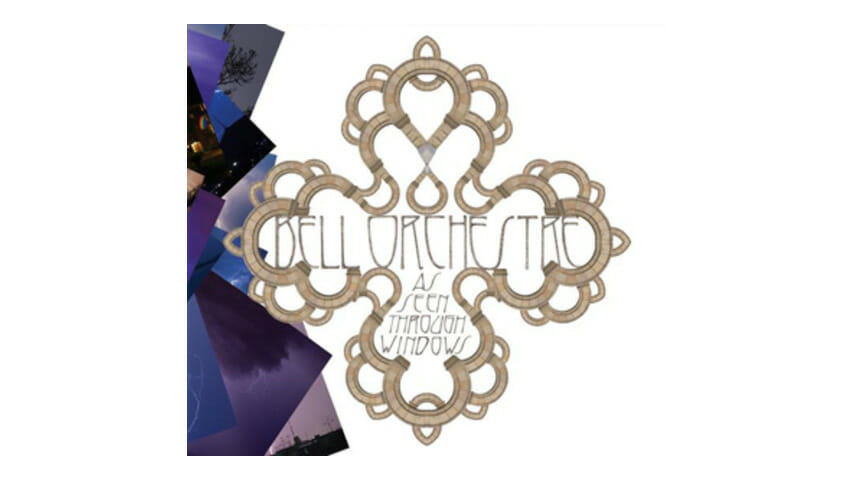
Arcade Fire offshoot steps into their own spotlight with their second release
Hailed as a minor triumph in post-rock imagination for its deft amalgamation of classical minimalism and indie rock sweat on 2005’s Recording a Tape the Colour of the Light, Bell Orchestre undeniably cleared their first hurdle of crawling out of the spotlight fixed upon its sister group, Arcade Fire. But four years later, the “post-rock” tag doesn’t seem like a very fitting description for the group, as it’s hardly iconoclastic enough to be “post-” anything, and there’s little in the band’s sound that would mark it as belonging anywhere on the “rock” spectrum, either. Free of those markers, Bell Orchestre has made As Seen Through Windows, an album that proves that this group is much more than a rock band that happens to play instrumental music.
Opening with a chorus of oscillating strings, horns and clicking percussion massaged into a massive wall of reverb, “Stripes” is the kind of track that wouldn’t be out of place on a Steve Reich album, as it dares to drop the listener smack in the middle of a tangible and incomprehensible sonic landscape with few obvious reference points. The following “Elephants” provides a path out, immediately dropping into a lull of innocuously echoing vocal layers and trumpets until a violent eruption of distorted drums and violin squeals takes the arrangement down a sinister side road. Eventually unraveling into rudiments of plucked violin and melodica, it’s a startling nine minutes of music, an album’s worth of ideas crammed into one mercurial track.
That’s a tough one-two punch to follow, and the Montreal sextet does so by drifting through cascading streams of bells (“Water/Light/Shifts”), frenetic, trumpet-led stomps (“The Gaze”), and understated chamber pop (“Air Lines/Land Lines”) that has far more in common with modern classical composition than with any bands in the orchestral-pop tradition. Despite the occasional thundering drums and sweaty catharsis, this is cinematic music in the truest sense, meticulously constructed and ingeniously textured, capturing a sense of emotional depth and wide-eyed wonder as the arrangements trace a trajectory through ethereal intros, slowly congealing climaxes, and rousing finales. It’s a well-worn formula, but it never quite becomes predictable here, with even the most abstract compositional flourishes revealing their pop craftsmanship after a few listens.
No doubt, the presence of three Arcade Fire members (Richard Reed Parry, Sarah Neufeld, Pietro Amato) ensures that a similar visceral pulse runs through both acts. And just as Arcade Fire refined its approach on its second release, Bell Orchestre has become the rare pop band that can stretch out into longer and more adventurous arrangements without stumbling into navel-gazing or unnecessary repetition. The three years that have passed since the band’s debut has left Bell Orchestre a far more confident act than the one that once served as the house band for a Montreal dance ensemble, one that simultaneously expands and tightens its focus with an album that ultimately inhabits its own place on the pop-music spectrum.